
Albany County is a county in the state of New York, United States. Its northern border is formed by the Mohawk River, at its confluence with the Hudson River, which is to the east. As of the 2020 United States Census, the population was 314,848. The county seat and largest city is Albany, which is also the state capital of New York. As originally established by the English government in the colonial era, Albany County had an indefinite amount of land, but has had an area of 530 square miles (1,400 km2) since March 3, 1888. The county is named for the Duke of York and of Albany, who became James II of England. The county is part of the Capital District region of the state.
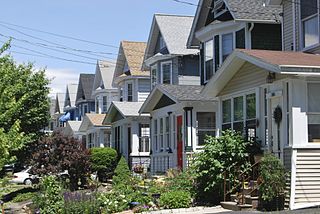
Albany is the capital and oldest city in the U.S. state of New York, and the seat of and most populous city in Albany County. It is located on the west bank of the Hudson River, about 10 miles (16 km) south of its confluence with the Mohawk River.
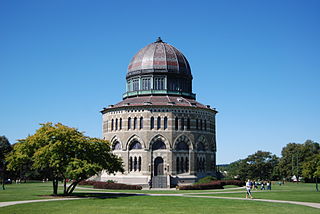
Schenectady is a city in Schenectady County, New York, United States, of which it is the county seat. As of the 2020 census, the city's population of 67,047 made it the state's ninth-most populous city and the twenty-fifth most-populous municipality. The city is in eastern New York, near the confluence of the Mohawk and Hudson rivers. It is in the same metropolitan area as the state capital, Albany, which is about 15 miles (24 km) southeast.

Troy is a city in the United States state of New York and is the county seat of Rensselaer County, New York. It is located on the western edge of that county on the eastern bank of the Hudson River just northeast of the capital city of Albany. Troy has close ties to Albany, New York and nearby Schenectady, forming a region popularly called the Capital District.
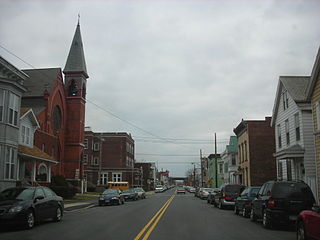
Green Island is a coterminous town-village in Albany County, New York, United States, some 8 miles (13 km) north of Albany. Green Island is one of only five such town-village amalgamations in New York. The population was 2,934 at the 2020 census, and the ZIP code is 12183. While the town of Green Island was once an island, it was connected to the mainland on the west side of the Hudson River in the 1960s.

Colonie is a town in Albany County, New York, United States. It is the most-populous suburb of Albany, and is the third-largest town in area in Albany County, occupying approximately 11% of the county. Several hamlets exist within the town. As of the 2020 census, the town had a total population of 85,590.

The Capital District, also known as the Capital Region, is the metropolitan area surrounding Albany, the capital of the U.S. state of New York. The Capital District was first settled by the Dutch in the early 17th century and came under English control in 1664. Albany has been the permanent capital of the state of New York since 1797. The Capital District is notable for many historical events that predate the independence of the United States, including the Albany Plan of Union and the Battles of Saratoga.

New York State Route 2 (NY 2) is a state highway in the Capital District of New York in the United States. It extends for 30.89 miles (49.71 km) from an interchange with Interstate 87 (I-87) and NY 7 in the town of Colonie to the Massachusetts state line in Petersburgh, where it continues to Boston as Massachusetts Route 2. The route passes through the cities of Watervliet and Troy, where it connects to NY 32 and U.S. Route 4, respectively. In Grafton, located midway between Troy and Massachusetts, NY 2 serves Grafton Lakes State Park.

The Onrust was a Dutch ship built by Adriaen Block and the crew of the Tyger, which had been destroyed by fire in the winter of 1613. The Onrust was the first ship to be built in what is now New York State, and the first fur trading vessel built in America. The construction took four months in the winter of 1614 somewhere in New York Bay. Help from the local Native population is surmised based on the relationship developed by Jon Rodriquez, left on the island during a previous voyage. The Onrust was 44.5 feet long and capable of carrying 16 tons.
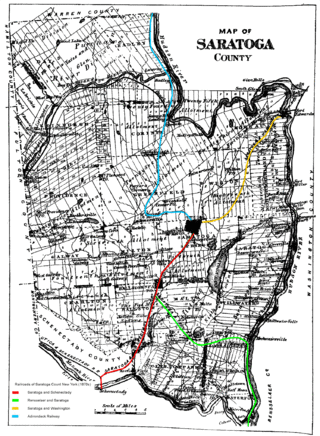
The Rensselaer and Saratoga Railroad was a railway company that operated in the states of New York and Vermont in the 19th century. At its peak it controlled a 150-mile (240 km) network. The Delaware and Hudson Railway leased the company in 1871 and formally merged it in 1945.
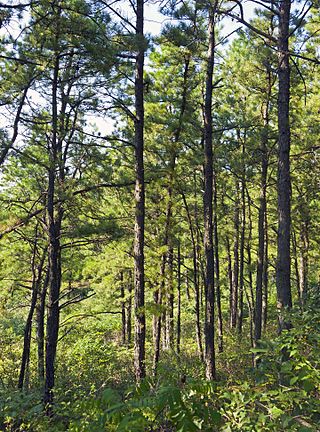
The Albany Pine Bush, referred to locally as the Pine Bush, is one of the largest inland pine barrens in the world. It is centrally located in New York's Capital District within Albany and Schenectady counties, between the cities of Albany and Schenectady. The Albany Pine Bush was formed thousands of years ago, following the drainage of Glacial Lake Albany.
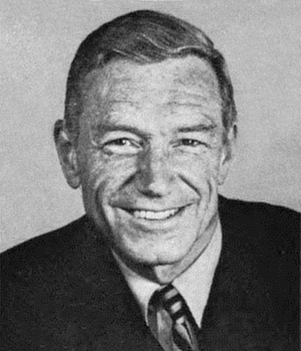
Samuel Studdiford Stratton was an American Democratic political figure in Upstate New York. He is notable for his service as Mayor of Schenectady, and his 30-year career as a member of the United States House of Representatives.

The neighborhoods of Albany, New York are listed below.
Watervliet was a town that at its height encompassed most of present-day Albany County and most of the current town of Niskayuna in neighboring Schenectady County, in the state of New York, United States. Just prior to its dissolution, the town encompassed the current towns of Colonie and Green Island and the city of Watervliet.
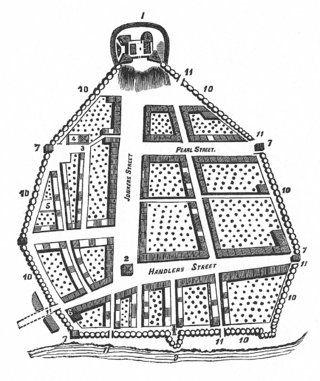
The streets of Albany, New York have had a long history going back almost 400 years. Many of the streets have changed names over the course of time, some have changed names many times. Some streets no longer exist, others have changed course. Some roads existed only on paper. The oldest streets were haphazardly laid out with no overall plan until Simeon De Witt's 1794 street grid plan. The plan had two grids, one west of Eagle Street and the old stockade, and another for the Pastures District south of the old stockade.

The area of New York's Capital District, also known as the Albany metropolitan area, has seen prominent historical events, artistic creations, and unique contributions to the culture of the United States since the 17th century. The largest city in the area, Albany, consistently ranks high on lists of top cities/metro areas for culture, such as being 23rd in the book Cities Ranked & Rated. The Albany-Schenectady-Troy metro area ranked 12th among large metro areas, and Glens Falls ranked 12th among the small metro areas, in Sperling's Best Places, and Expansion Management gave the Albany-Schenectady-Troy area five Stars, its highest ranking, for quality of life features.
The Woodlawn Preserve is a patch of the Albany Pine Bush in the Woodlawn neighborhood of the city of Schenectady, New York. It is the only remaining example of this rare ecosystem in that area, a combination of swamp, wetlands, water bodies, and dune vegetation, and one of the most biologically diverse parcels in Schenectady County.

North Albany is a neighborhood in the city of Albany, New York. North Albany was settled in the mid-17th century by the Patroon of Rensselaerswyck and his tenants and later became a hamlet in the town of Watervliet. Due to the Erie Canal being constructed in 1825, North Albany saw immense growth, with the Albany Lumber District and an influx of Irish immigrants lending the area the name of Limerick. Home to many historic warehouses and row houses, North Albany continues to be an important industrial neighborhood. Recent efforts have begun to gentrify the neighborhood by adapting heavy industry/warehouse use to artistic and entertainment venues, such as a German beer garden, an amusement park, live music venues, and arts and crafts marketplaces.
The following is a bibliography of New York. New York is a U.S. state in the Mid-Atlantic region of the Northeastern United States. New York is commonly known as the "Empire State" and sometimes the "Excelsior State". It is the nation's third most populous state at over 19 million people. The capital of the state is Albany and its most populous city is New York City. New York is often referred to as New York State to distinguish it from New York City.
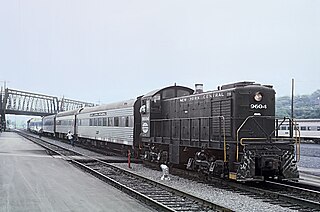
The Laurentian was a named passenger train operated by the Delaware and Hudson Railway between New York City and Montreal, providing same-day daylight service. The train used the D&H's famed route along Lake Champlain north of Albany, New York. The Laurentian, along with its overnight companion the Montreal Limited, was the flagship of the D&H from its inauguration in 1923 until its discontinuance on April 30, 1971. Since 1974, Amtrak has operated the Adirondack over the same route.
















